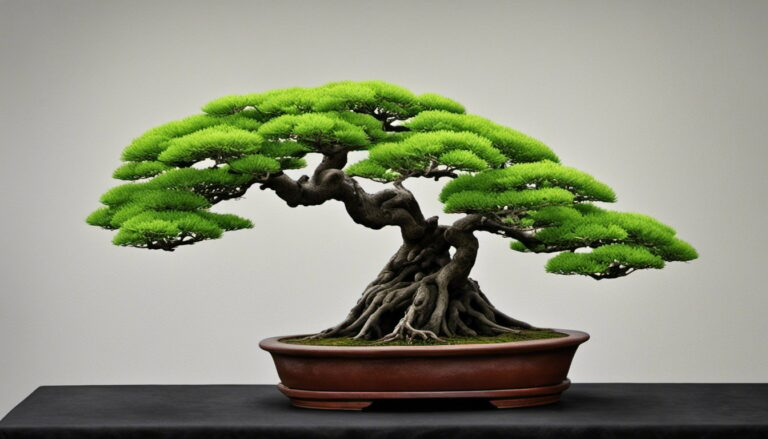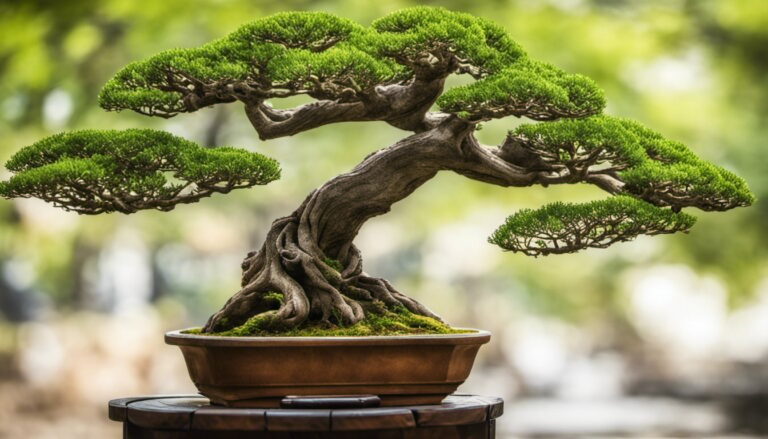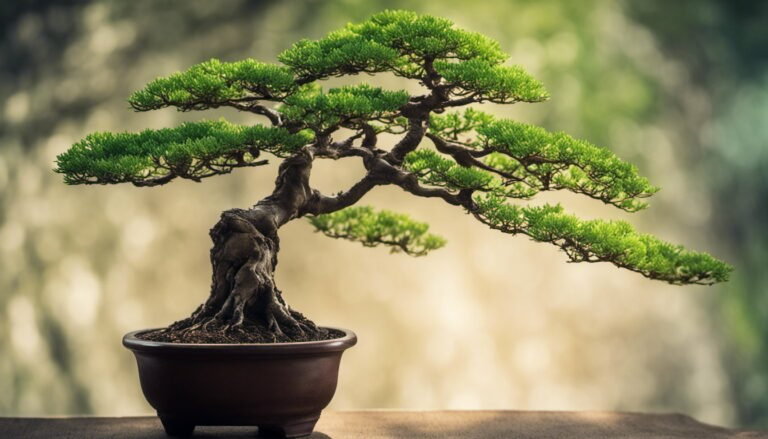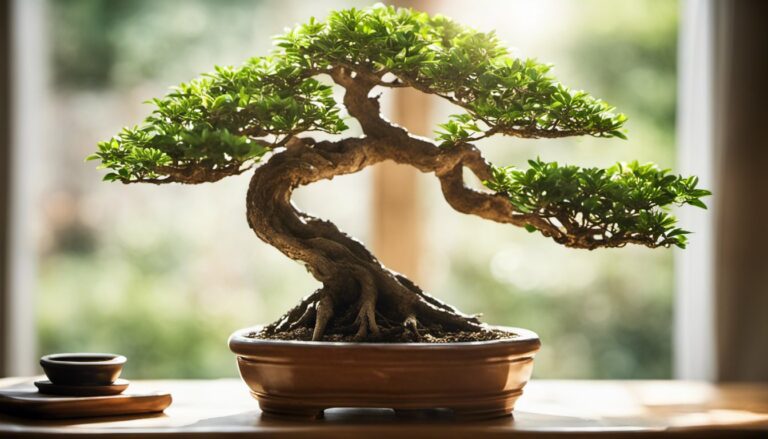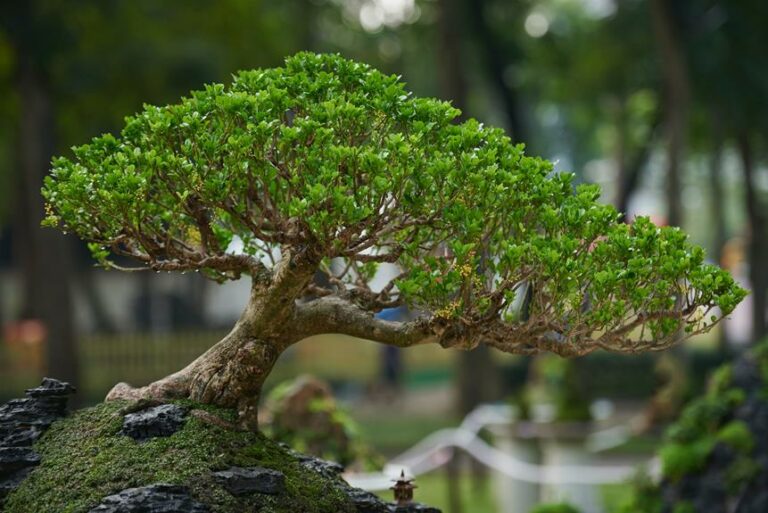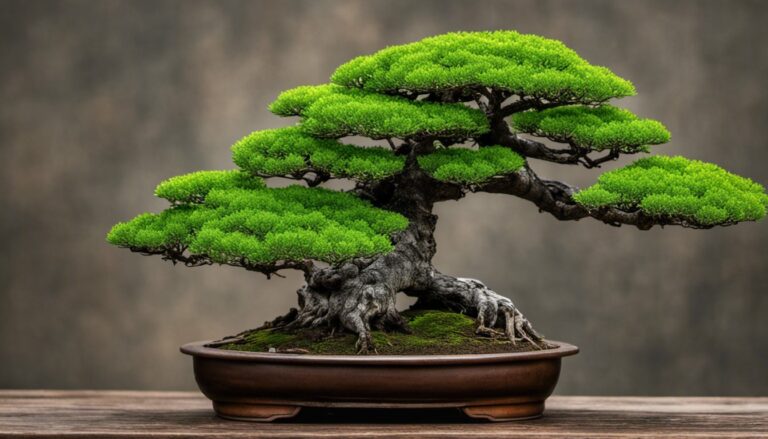Unleash the Power of Sumo Bonsai: Master the Art of Tree Transformation
Are you ready to unlock the secrets of sumo bonsai and become a master of tree transformation? Imagine creating your very own miniature masterpiece, with short, wide trunks and low hanging branches that exude strength and presence.
In 'Unleash the Power of Sumo Bonsai: Master the Art of Tree Transformation,' we will guide you through the intricacies of designing, planting, and caring for sumo bonsai trees.
Discover the ideal planting techniques and species, and learn the importance of regular watering, suitable soil mixtures, and adequate sunlight.
While the journey may present challenges, the rewards of mastering the art of sumo bonsai are immeasurable. Join us as we delve into the captivating world of sumo bonsai and unlock its true power.
Key Takeaways
- Sumo bonsai is a style of bonsai tree with a short, wide trunk and low hanging branches.
- Designing and timing are crucial for the success of the sumo bonsai technique, with early spring being the best time to start the project.
- Planting techniques for sumo bonsai involve removing existing soil, trimming roots, and using rooting powder for cuttings or seedlings.
- Deciduous species like elms, oaks, maples, and ficus are ideal for sumo bonsai, while evergreen coniferous species should be avoided.
Sumo Bonsai Style: Short and Wide Trunks
To achieve the sumo bonsai style with short and wide trunks, you need to select fast-growing species like elms and follow specific design and planting techniques.
Sumo bonsai trees have a unique aesthetic with their low hanging branches and wide triangle-shaped canopies. Examples of sumo bonsai trees can range from those with short wide trunks and lower branches to taller trees with higher branches.
Designing your sumo bonsai involves drawing a rough outline of how you want it to look, providing direction during the growing process. It's best to start the sumo bonsai project in early spring when bonsai trees, especially deciduous ones, grow the most.
Timing is crucial for the success of the sumo bonsai technique.
Designing and Timing for Success
To achieve success in designing and timing your sumo bonsai, you need to carefully plan and consider the growth patterns of your chosen tree species.
Designing your sumo bonsai involves drawing a rough outline of how you want it to look, providing direction during the growing process.
Starting the project in early spring (first few weeks of March) is best, as bonsai trees, especially deciduous ones, grow the most during this time. Timing is crucial for the success of the sumo bonsai technique.
Additionally, it's important to choose the right plant species for sumo bonsai, such as fast-growing species like elms, oaks, maples, and ficus. These species can handle the constant pruning and chopping required for the sumo bonsai style.
Planting Techniques for Sumo Bonsai
How do you properly plant and cultivate a sumo bonsai tree?
Planting a sumo bonsai tree involves specific techniques to ensure its successful growth. If you're starting with a store-bought tree, begin by removing the existing soil, trimming excess roots, and planting it in a pot with proper drainage.
For cuttings or seedlings, create a cutting, prepare a pot with bonsai potting soil, and use rooting powder to promote root growth. Regular fertilization during the summer months is important for thick trunk growth.
To shape the tree, grow sacrifice branches for about 5 years to widen the trunk, and prune them during spring or summer. Wiring branches in place and defoliating upper branches can promote growth in lower branches and create a v-shaped canopy for a sumo bonsai tree.
Ideal Plant Species for Sumo Bonsai
When selecting plant species for your sumo bonsai, consider deciduous species like elms, oaks, maples, and ficus. These species are ideal for the sumo bonsai style due to their ability to handle the constant chopping and pruning required. They also have fast growth rates, which is beneficial for creating the short, wide trunk and low hanging branches characteristic of sumo bonsai.
These plants can be easily shaped and trained to achieve the desired triangular canopy shape. On the other hand, it's best to avoid evergreen coniferous species such as pine or junipers as they may not respond well to the frequent pruning and shaping.
Care Requirements for Thriving Sumo Bonsai
Maintaining a thriving Sumo Bonsai tree requires consistent care and attention to its watering, soil, and light requirements. Proper watering is essential for the health of your Sumo Bonsai. Check the topsoil daily and water only when it is dry. The soil should provide a balance between aeration, drainage, and moisture, such as a volcanic rock mix or cactus soil. When it comes to sunlight, your Sumo Bonsai needs at least 6 hours of direct sunlight during the summer months. It is best to keep it outdoors or near a south-facing window. To summarize the care requirements for thriving Sumo Bonsai, refer to the table below:
| Care Requirements | Tips and Guidelines |
|---|---|
| Watering | Check topsoil daily, water when dry |
| Soil | Use a well-draining soil mix |
| Sunlight | Provide at least 6 hours of direct sunlight during summer months |
| Location | Keep outdoors or near a south-facing window |
The Unique Aesthetic of Sumo Bonsai
To fully appreciate the artistry of Sumo Bonsai, immerse yourself in its unique aesthetic and experience the captivating transformation of these tree masterpieces.
- Sumo bonsai trees have a distinctive look, with short, wide trunks that taper to a thin point.
- The low hanging branches create a wide triangle-shaped canopy of leaves.
- Fast-growing species like elms are ideal for achieving the sumo bonsai style.
- Whether it's a tree with a short wide trunk or a taller tree with higher branches, sumo bonsai trees showcase a visually striking appearance.
The unique aesthetic of sumo bonsai lies in the balance between the trunk's width and the height of the branches. It creates a sense of strength and stability, while also displaying a graceful elegance. The combination of the short, wide trunk and the low hanging branches gives the tree a sense of age and wisdom. It's a captivating sight to behold and a testament to the skill and artistry of the bonsai master.
Challenges and Risks in the Transformation Process
Overcoming challenges and managing risks is an essential part of the transformative process in mastering the art of Sumo Bonsai. As you delve into this intricate technique, you must be prepared to face various hurdles along the way.
One of the main challenges is achieving the desired shape and size of the tree. It requires careful pruning, wiring, and defoliating to create the distinctive short, wide trunk and low hanging branches characteristic of Sumo Bonsai.
Another risk involves timing and patience. The process of thickening the trunk and shaping the canopy can take several years, and it requires consistent care and attention. Mistakes in pruning or wiring can also lead to irreversible damage to the tree.
However, with dedication, knowledge, and a willingness to learn from these challenges, you can successfully navigate the transformation process and create stunning Sumo Bonsai trees.
Conclusion
Congratulations! You have now embarked on a journey into the captivating world of sumo bonsai, mastering the art of tree transformation.
By understanding the intricacies of designing, planting, and caring for these unique trees, you have unlocked their true potential. With their short, wide trunks and low hanging branches, sumo bonsai trees exude strength and presence.
Through regular watering, suitable soil mixtures, and adequate sunlight, you have ensured the thriving of your miniature masterpiece.
Embrace the challenges and risks, for the rewards of sumo bonsai are immeasurable.


